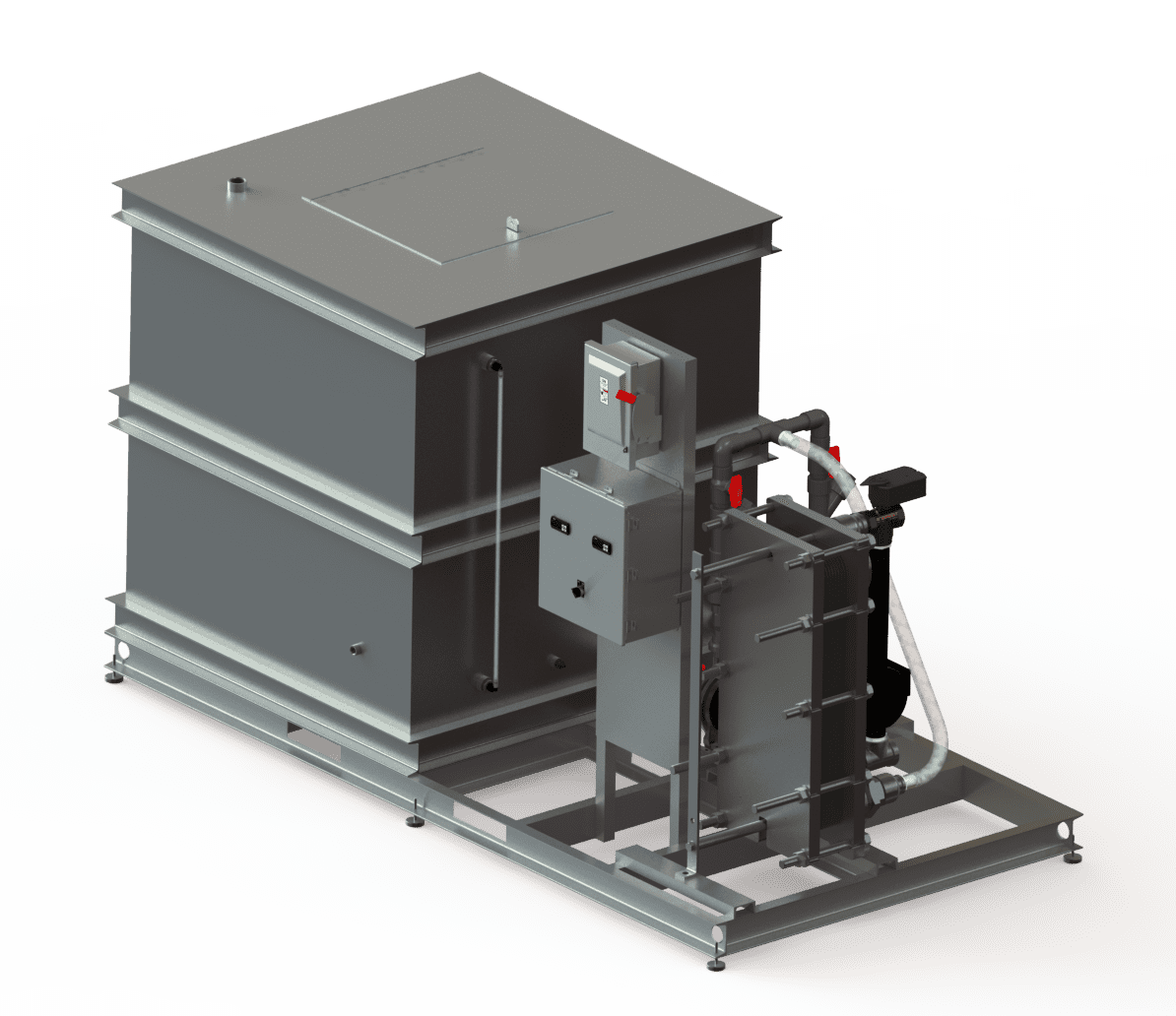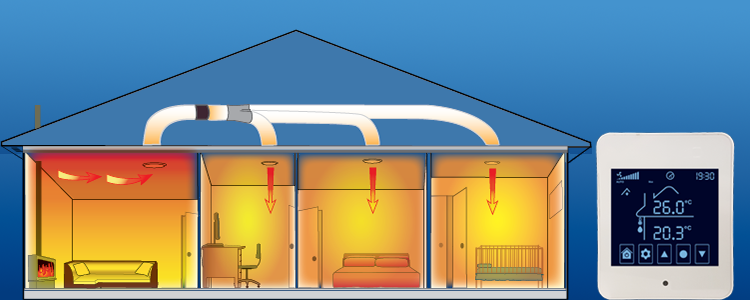Five Techniques DVS Heat Transfer Systems Improve Energy Management in Manufacturing
Wiki Article
The Function of Heat Transfer Systems in Sustainable Energy Solutions for the Future
Heat transfer systems are vital in the mission for sustainable energy solutions. They enhance thermal power monitoring, boosting the effectiveness of renewable modern technologies. By using mechanisms like convection, conduction, and radiation, these systems lessen energy losses. Their role in solar thermal and geothermal applications is specifically considerable. As developments emerge, the possibility for additional advancements elevates crucial concerns regarding future power approaches. What advancements will form the landscape of sustainable power?Understanding Heat Transfer Systems

The Significance of Thermal Power Management
Effective thermal power administration is crucial for making best use of energy effectiveness and lessening waste in various systems. By managing temperature level and optimizing Heat transfer processes, companies can substantially minimize power intake and functional expenses. Efficient management involves the execution of sophisticated innovations and practices that keep track of and control thermal conditions within systems, ensuring that energy sources are utilized efficiently. On top of that, correct thermal power management adds to decreasing greenhouse gas discharges, lining up with international sustainability goals. It also enhances system integrity and performance, bring about improved product quality and longer devices life expectancy. Ultimately, prioritizing thermal energy management is a vital step towards creating extra sustainable power services and cultivating a liable strategy to power consumption in property and industrial contexts.Applications of Heat Transfer in Renewable Resource
While different renewable resource sources guarantee sustainability, the effective application of Heat transfer plays a necessary function in their efficiency. In wind energy systems, Heat transfer is utilized for turbine element cooling, boosting performance and longevity. Geothermal power counts on effective Heat exchange between the earth's subsurface and the liquid distributing in the system, making the most of power extraction. Biomass energy processes likewise take advantage of Heat transfer, as it helps in transforming natural products into useful gas through pyrolysis and gasification. Additionally, in hydropower, preserving suitable temperatures in storage tanks can boost energy output. Each of these applications shows the essential importance of Heat transfer systems in enhancing renewable resource technologies, eventually adding to an extra sustainable energy future.Enhancing Solar Thermal Power Efficiency
As solar thermal power systems remain to develop, improving their efficiency has ended up being important for making the most of power result. Advances in Heat transfer technologies, such as enhanced thermal storage space materials and cutting-edge Heat exchangers, play a significant function in boosting performance. By using innovative products that have superior thermal conductivity, systems can catch and move Heat better. Furthermore, incorporating monitoring systems that follow the sun's course assurances that enthusiasts obtain optimal solar direct exposure throughout the day. Making use of nanotechnology in solar absorbers can even more raise energy absorption rates. Integrating automated control systems aids take care of and manage temperature levels power circulation successfully, leading to decreased losses and improved general system efficiency. These enhancements lead the way for even more lasting solar thermal energy options in the future.Geothermal Heating: A Sustainable Option
Geothermal home heating presents a viable choice for sustainable energy, providing substantial environmental advantages via decreased greenhouse gas exhausts. Its efficiency and cost-effectiveness make it an appealing choice to conventional heating unit. Nevertheless, difficulties connected to implementation must be addressed to optimize its possible effect.Ecological Benefits of Geothermal
Traditional heating approaches add substantially to greenhouse gas emissions, geothermal home heating offers an engaging option that lessens ecological impact. By taking advantage of the Earth's interior Heat, geothermal systems make use of an eco-friendly power resource, markedly reducing dependence on nonrenewable fuel sources. This approach generates very little carbon discharges, making it a cleaner alternative internet for commercial and property home heating. Additionally, geothermal systems advertise power effectiveness, as they call for much less power contrasted to standard home heating systems. DVS Heat Transfer Systems. The application of geothermal energy also aids in lowering air contamination, enhancing local air quality and public health. As a sustainable service, geothermal home heating supports environment modification mitigation efforts, placing itself as a crucial part in the shift towards a greener futureEffectiveness and Cost-Effectiveness
Just how does geothermal home heating gauge up in terms of performance and cost-effectiveness contrasted to standard heater? Geothermal heating shows remarkable efficiency, often achieving a coefficient of efficiency (POLICE) of 3 to 5, suggesting it generates three to five systems of Heat for every device of power eaten. This effectiveness translates into reduced web operating expense, specifically in regions with stable geothermal sources. Initial installment expenses can be greater than standard systems; nevertheless, long-lasting savings on power costs and decreased upkeep expenditures can offset these in advance financial investments. Additionally, many federal governments incentivize geothermal systems through discounts and tax obligation credit ratings, enhancing their cost-effectiveness. On the whole, geothermal heating arises as a sustainable and financially sensible alternative to even more conventional home heating remedies.Application Obstacles and Solutions
Countless difficulties can impede the extensive implementation of geothermal heating unit, despite their clear benefits as a lasting power option. High first installment costs usually hinder homeowners and financiers, making funding a significant barrier. Additionally, the geographical restrictions of ideal geothermal sites restrict access in certain regions. Regional laws and allowing procedures can likewise make complex task advancement, bring about delays. Public awareness and understanding of geothermal systems stay low, hindering acceptance. To attend to these obstacles, targeted education projects can boost open secret, while federal government rewards might ease financial problems. Teaming up with neighborhood authorities to enhance regulations may facilitate smoother task authorizations, eventually advertising the adoption of geothermal home heating as a viable, lasting energy alternative.Technologies in Heat Transfer Technologies
Developments in Heat transfer technologies play a crucial duty in enhancing power performance and sustainability. Advanced Heat exchangers and stage modification materials go to the leading edge of these advancements, providing considerable renovations in thermal management. These technologies not only optimize energy use yet additionally add to decreasing ecological impact in different applications.Advanced Heat Exchangers
Advanced Heat exchangers play an essential function in boosting energy performance throughout various applications in sustainable power read here options. These devices help with the transfer of Heat in between two or even more liquids, noticeably lowering power consumption in procedures such as commercial home heating, air conditioning, and power generation. Technologies in products and layout, such as making use of nanofluids and small arrangements, have actually caused enhanced thermal performance and minimized size needs. Additionally, improvements in digital surveillance and control systems permit enhanced operation, additional enhancing effectiveness. By decreasing waste Heat and optimizing power healing, progressed Heat exchangers add to reduce carbon impacts and support the change toward environmentally pleasant modern technologies. Their proceeded advancement is essential for accomplishing global energy sustainability goals.
Stage Modification Products
The integration of stage change products (PCMs) into Heat transfer technologies represents a significant improvement in power management and effectiveness. PCMs take in and launch thermal energy during their phase modifications, making it possible for efficient temperature level policy in building materials and power systems. By keeping excess Heat during height durations and launching it when demand increases, PCMs add to fill changing and power conservation - DVS Heat Transfer Systems. This capability boosts the performance of eco-friendly energy systems, especially in solar thermal applications. Additionally, PCMs can boost the thermal comfort of interior atmospheres, minimizing reliance on standard home heating and cooling approaches. As developments in PCM solutions remain to emerge, their role in lasting power solutions is poised to expand, using encouraging methods for future study and application
Future Prospects for Heat Transfer in Sustainable Energy
As the demand for lasting energy options remains to rise, the duty of Heat transfer systems is ending up being progressively critical in forming future technologies. Innovations in materials and designs are anticipated to improve efficiency in Heat transfer, decreasing energy losses in different applications. The assimilation of innovative thermal storage systems, such as phase modification products and thermochemical storage, will allow far better monitoring of energy sources. Research into nanofluids and biomimetic Heat exchangers might additionally optimize thermal efficiency. Additionally, the adoption of wise modern technologies will certainly permit for real-time tracking and adaptive control of Heat transfer procedures. These developments are poised to significantly add to the general efficiency and sustainability of energy systems, paving the way for a more energy-efficient future.Often Asked Inquiries
How Can Individuals Execute Heat Transfer Systems at Home?

People can execute Heat transfer systems in the house by mounting energy-efficient devices, making use of glowing home heating, and enhancing insulation. These steps boost power efficiency, reduce expenses, and advertise sustainable practices in household settings.

What Are the Prices Related To Installing Heat Transfer Equipments?
The costs connected with mounting Heat transfer systems differ widely, normally incorporating tools, installment labor, and upkeep. Aspects such as system kind, home size, and neighborhood laws substantially influence the total expense involved.Are There Government Incentives for Heat Transfer System Installations?
Federal government incentives for Heat transfer system installations vary by area and can consist of tax grants, credit ratings, and discounts. These financial benefits intend to encourage fostering, ultimately advertising power effectiveness and reducing environmental effect within areas.How Do Heat Transfer Systems Impact Power Bills?
Heat transfer systems significantly affect power expenses by optimizing power efficiency. By boosting the transfer of Heat, these systems lower energy intake, causing reduced utility prices and producing a more sustainable strategy to energy management.What Upkeep Is Required for Heat Transfer Solutions?
Maintenance for Heat transfer systems includes regular inspections, cleansing of parts, checking fluid degrees, ensuring appropriate insulation, and changing worn components. These jobs aid maintain efficiency, avoid failures, and prolong the system's operational life expectancy.These systems promote the movement of thermal energy from one tool to an additional, enabling the transfer of Heat for heating, air conditioning, or power generation functions. Geothermal energy depends on reliable Heat exchange in between the planet's subsurface and the fluid circulating in the system, maximizing energy removal. Additionally, geothermal systems promote power performance, as they need less energy contrasted to standard home heating systems. Advanced Heat exchangers play an essential role in enhancing energy efficiency throughout numerous applications in lasting power remedies. Heat transfer systems especially affect power expenses by maximizing power performance.
Report this wiki page